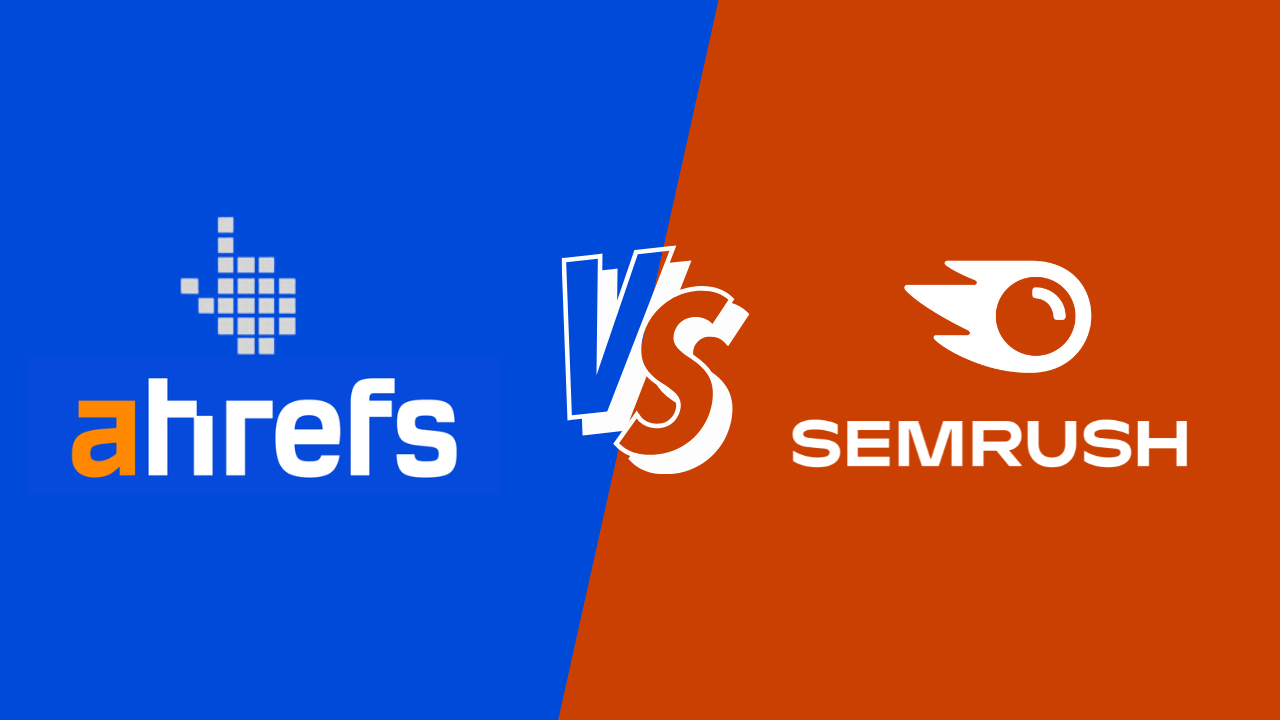Looking for the ultimate SEO edge? You've likely found yourself wondering: Semrush vs. Ahrefs — which one is better? You're not alone in this tough choice.
Semrush started in 2008 with just two simple tools and grew into a powerful platform with over 50 features to boost your online visibility.
Ahrefs began in 2010 as a backlink checker and has since become a complete SEO toolkit offering everything from keyword research to website audits.
With both tools being so powerful, how do you choose the right one for your needs?
I'll walk you through their similarities, differences, good points, bad points, and special features. By the end, you'll know exactly which tool wins in this SEO battle.
Overview
Ahrefs and Semrush are two popular marketing tools that help you make your website rank better in search results. Ahrefs is simple enough for SEO beginners with a clean and easy-to-understand design. Semrush gives advanced features for SEO experts and marketing teams working with social media, content writing, and paid ads. Both tools have pros and cons, which I'll talk about in detail below.
If you don't have time to read the whole article, check out this quick comparison table:

Semrush
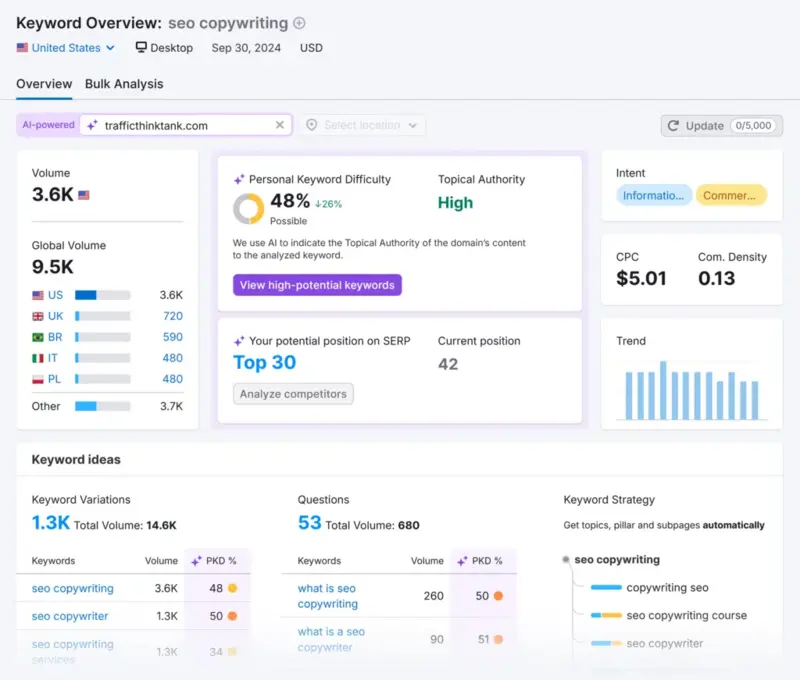
(Image Source: Semrush)
Semrush is more than just an SEO tool. Unlike Ahrefs, Semrush can help you plan, analyze and improve ad campaigns, grow your brand on social media, and understand what content works best in your field.
The Semrush Keyword Research toolkit gives way more information than Ahrefs Keyword Explorer. For example, Semrush shows search intent for every keyword and automatically groups related keywords, so you don't waste time researching similar keywords. Ahrefs doesn't offer anything like this.
Semrush also lets you pull more daily reports than Ahrefs, regardless of which pricing plan you choose. Even though Semrush uses multiple data sources to estimate website traffic, remember that these numbers are just estimates. Keep this in mind when analyzing your website and competitors with Semrush. It's also worth noting that only one user can be logged in and use Semrush at a time. If you want to add users to your account, it costs an extra $45/month per user on the Semrush Pro plan.
Ahrefs
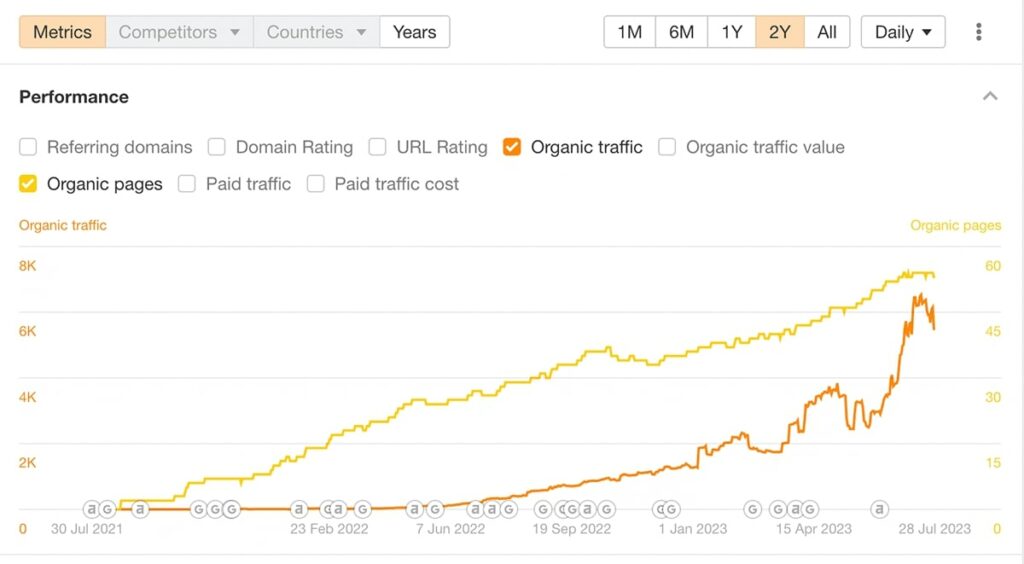
(Image Source: Ahrefs)
Ahrefs offers some helpful features I couldn't find in other tools, like comparing traffic versus the number of published pages. This report helps you see how the number of pages on your website relates to your traffic. This way, you can spot when your traffic jumped up and which pages helped cause that growth. Ahrefs also lets you see current and past webpage rankings right on the keyword analysis page. This helps you quickly see how your website ranks for a specific keyword and how rankings change over time.
Content writers will find the word count estimate for top-ranking pages helpful when deciding how long to make their content for better SEO.
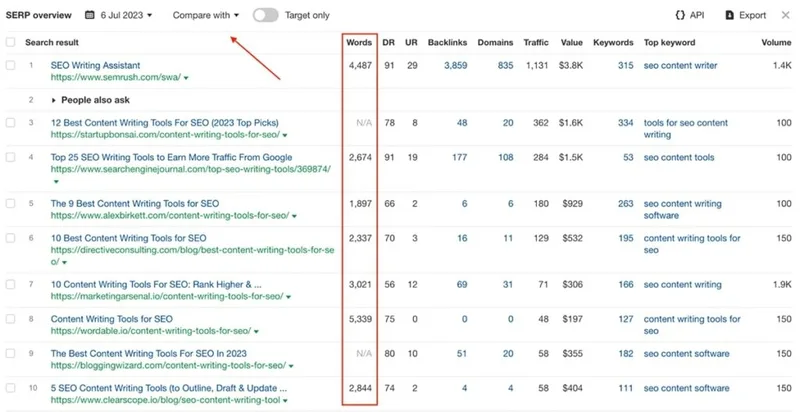
(Image Source: Ahrefs)
Unlike Semrush, Ahrefs doesn't offer a free trial. You'll need to pay $99 for Ahrefs Lite to try the tool. You might have heard about the free Ahrefs Webmasters Tool for verified site owners, but it's very limited and doesn't give access to essential tools like Keyword Explorer, Content, and Web Explorer. When comparing Ahrefs vs. Semrush, Semrush seems to win for variety and number of features. But your decision might be different depending on your budget and project goals.
Key features compared
Even though Semrush's and Ahrefs' features might seem similar, there are many important differences.
Keyword research data
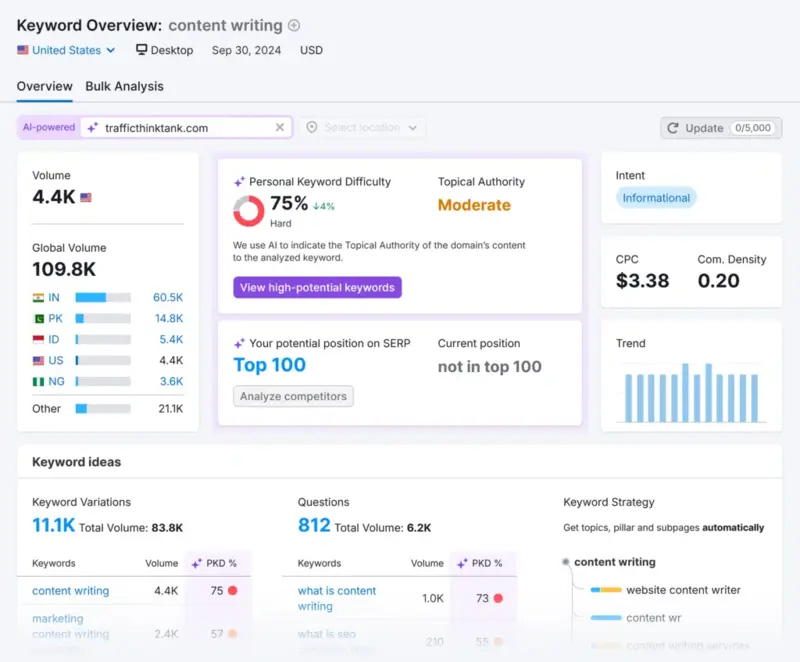
(Image Source: Semrush)
Unlike Ahrefs, Semrush shows more information in the Keyword Overview report. Some unique things you won't find in Ahrefs are keyword search intent, the number of results in search pages, the number of ads for a specific keyword, and keyword groups.
What's special about Ahrefs Keyword Explorer is that it shows the traffic potential for a specific keyword.
Why is this important? Because Google often "steals" clicks from website owners by showing featured snippets and ads at the top of search results. That's why traffic potential is a more accurate number to rely on.
Overall, Ahrefs' interface might be easier to understand if you're new to SEO tools. However, Semrush shows much more data in its keyword research report, including paid search info, making Semrush better for in-depth keyword research.
On-page & technical SEO data
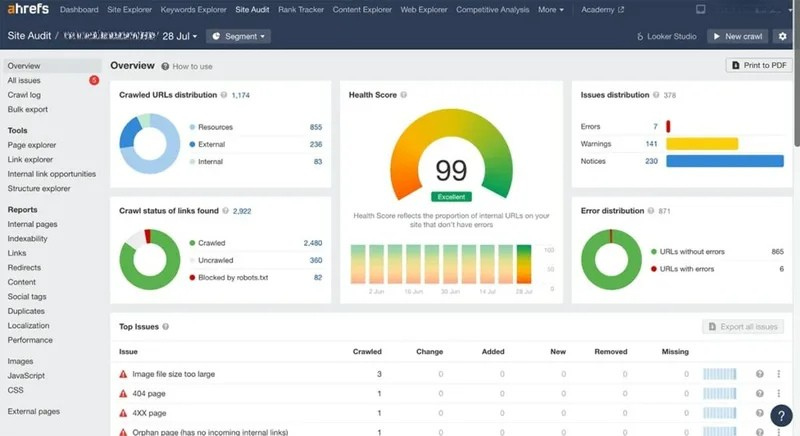
(Image Source: Ahrefs)
Both Ahrefs and Semrush have a Site Audit feature that helps analyze your website's "health" and find ways to improve it.
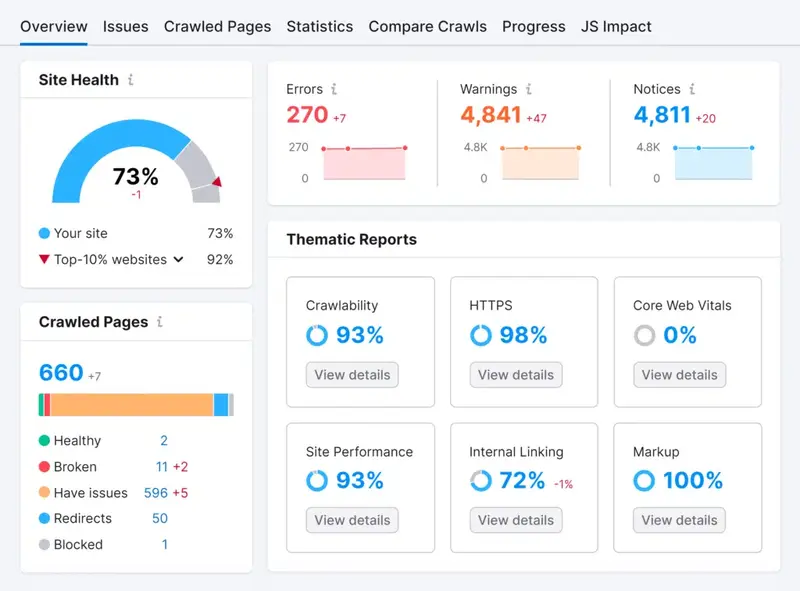
(Image Source: Semrush)
Many SEO experts also use Google Search Console with these tools to double-check indexing issues and better understand organic performance directly from Google.
From my experience, Semrush Site Audit is better since it finds more technical issues, like keyword cannibalization (when multiple pages target the same keyword), and prioritizes them based on how much they might affect performance. I'd argue that top issues found by Ahrefs, like image files being too large, aren't always the most urgent things to fix.
Unlike Ahrefs, Semrush has a powerful On Page SEO Checker that analyzes your website and suggests ranking improvements. This tool is perfect for SEO beginners and anyone wanting to improve their website's rankings but not knowing where to start.
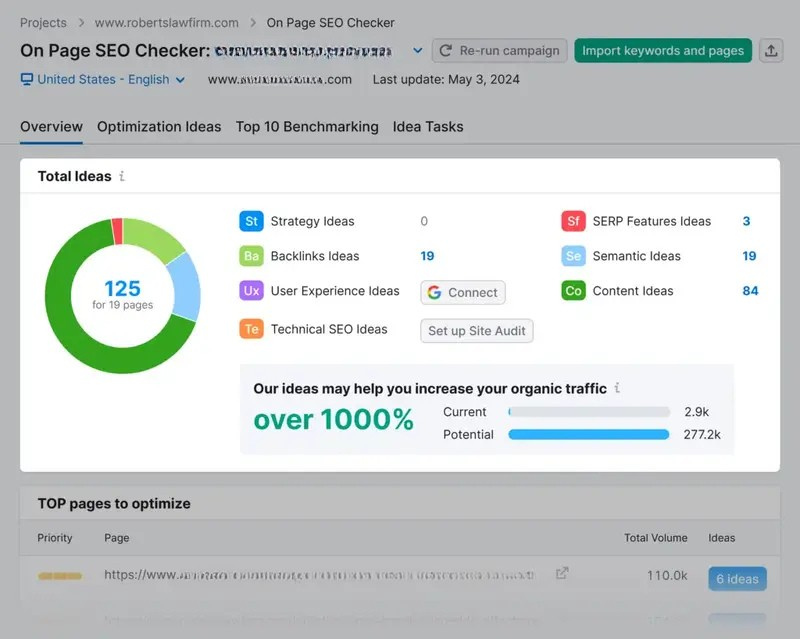
(Image Source: Semrush)
If you want to check on-page optimization with Ahrefs, you'll find several helpful reports, such as the Content Report with insights on H1 headings, meta descriptions, and internal linking opportunities. Overall, Semrush stands out for its technical and on-page optimization features. I think it does a much better job showing the problem areas of your website and guiding you toward what to fix first.
Off-page SEO data
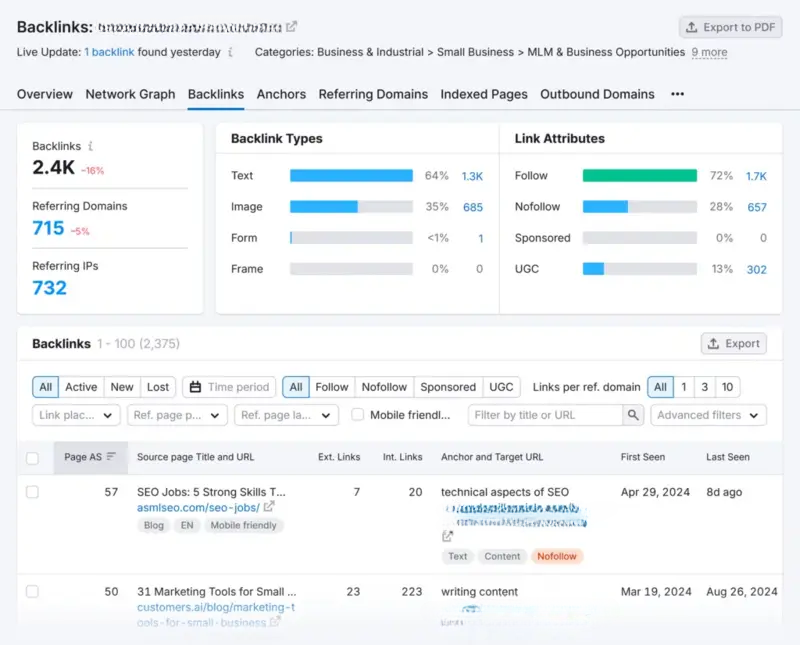
(Image Source: Semrush)
One of the most common off-page SEO activities is link building – which is why I'll explain the difference between Semrush's and Ahrefs' backlink reports and link building tools.
Both tools have backlink analysis reports, including referring domains and backlinks, new and lost referring domains, backlink charts, anchor texts, and backlink types. However, Semrush's backlink database is quite a bit bigger, with 43 trillion backlinks updating daily compared to Ahrefs' 30.6 trillion backlinks.
Unlike Ahrefs, Semrush also measures backlink toxicity. In other words, it shows backlinks that might potentially hurt your website's reputation.
If you actively reach out to other websites for link building, I recommend checking Semrush Link Building Tool, which finds backlink opportunities for your website and helps you connect with site owners.
Ahrefs has a broken link building report that shows pages linking to your website's 404 pages (pages that don't exist anymore). If you fix broken backlinks, they'll pass authority to live pages on your website. Ahrefs offers this feature in the Standard plan for $199/month.
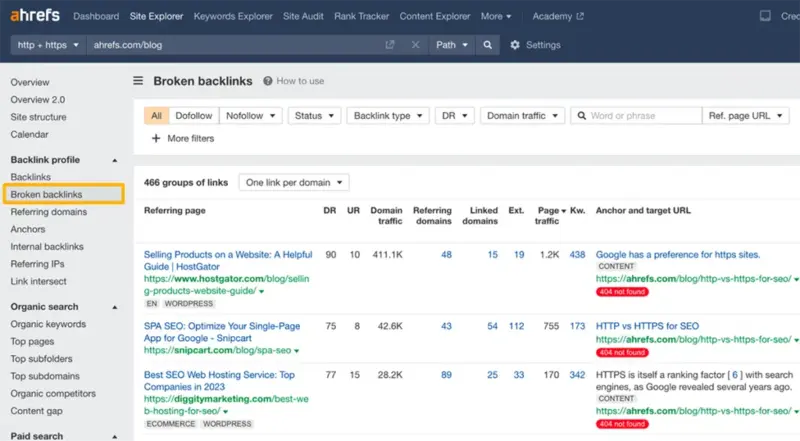
(Image Source: Ahrefs)
Overall, both tools have good backlink analysis features. If your current goal is to do a thorough backlink audit, Ahrefs might do a better job. But Semrush is your best option for backlink profile analysis and link building.
Local SEO reports
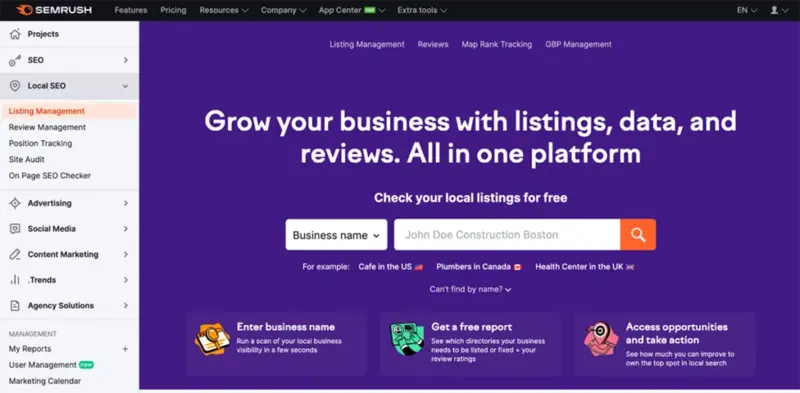
(Image Source: Semrush)
Semrush is a good choice if you need a complete and easy-to-use local SEO tool. Semrush Listing Management Tool helps manage your local listings across multiple directories, including Google My Business, Yelp, and Bing Places for Business.
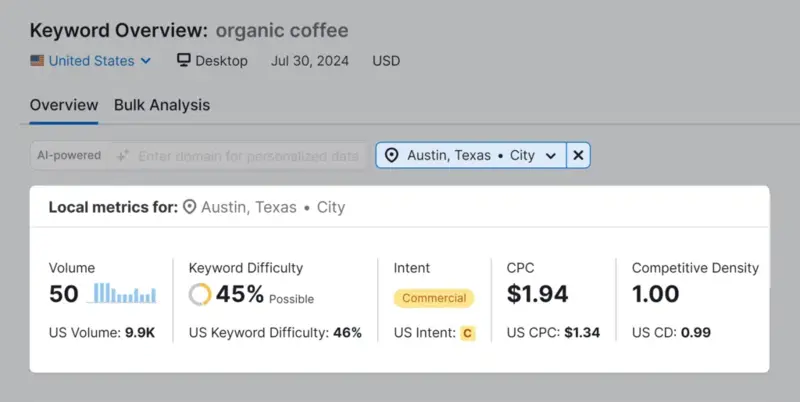
(Image Source: Semrush)
Unlike Ahrefs, Semrush lets you check keyword metrics for a specific location, including keyword difficulty, search volume, search intent, and cost-per-click (CPC). You can use the Keyword Research Tool to discover and analyze local keywords tied to countries, states, cities, and towns.
Ahrefs doesn't have a dedicated local SEO tool. However, you can use its Keyword Explorer to research local keywords. Also, Ahrefs Rank Tracker lets you track your website's rankings for desktop and mobile across more than 170 countries.
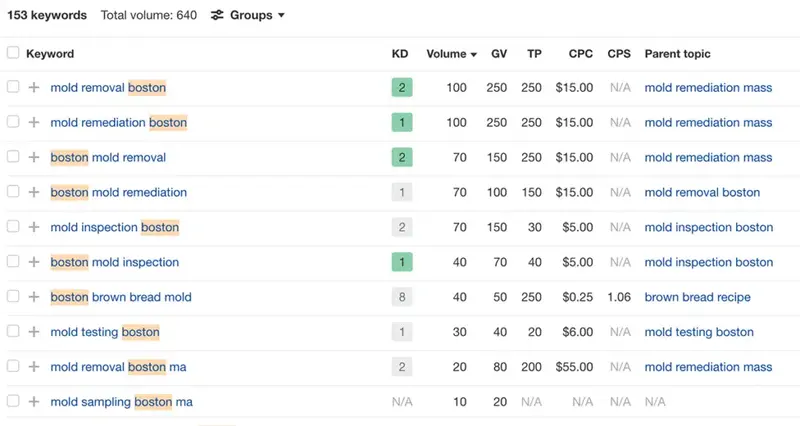
(Image Source: Ahrefs)
When comparing Ahrefs vs. Semrush for local SEO, Semrush is definitely the winner, offering tools specifically made for local businesses looking to improve their online visibility.
Paid advertising reports
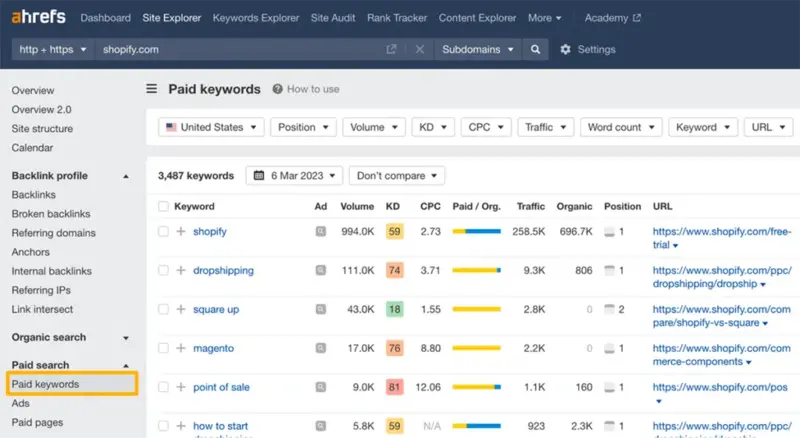
(Image Source: Ahrefs)
Although Ahrefs is mainly used for SEO, it does have some advertising features.
With Ahrefs Paid Keywords report, you can see competitor bidding keywords, cost-per-click for every keyword, what keywords send the most traffic, their positions, destination URLs, and ad copy examples.
Semrush's PPC Advertising Toolkit provides more reports and tools for display advertising, product listing, ads research, ads history, ad tracking, and the ability to export keyword lists to Google Ads-compatible files.
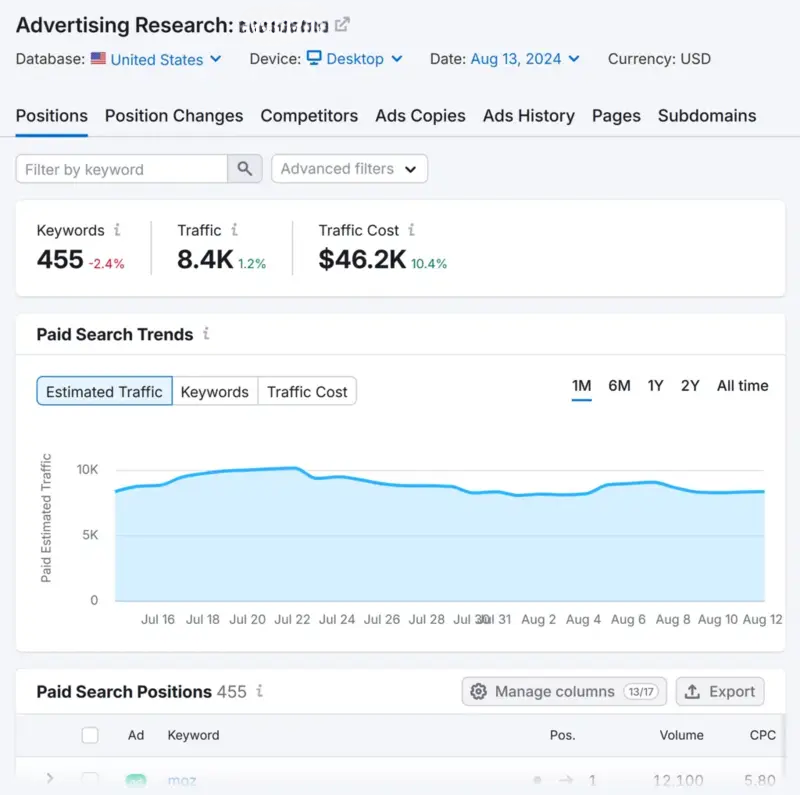
(Image Source: Semrush)
In my opinion, Semrush is clearly better if you run both SEO and Google Ads campaigns.
Overall reporting
Semrush lets you pull 3,000 domain analysis reports daily, even on its cheapest plan. Semrush limits increase up to 30,000 reports a day on its Guru plan and 50,000 reports on the Business plan.
Now compare that to Ahrefs, which offers up to 750 credits per month depending on the pricing plan. Credits are used every time you make a new request except for Rank Tracker and Site Audit.
You'll likely run out of available credits if you use Ahrefs for extensive keyword research and website analysis. In this case, Ahrefs will ask you to pay extra for additional credits.
All in all, Semrush is definitely the winner here, giving you much better value for your money.
Content marketing features
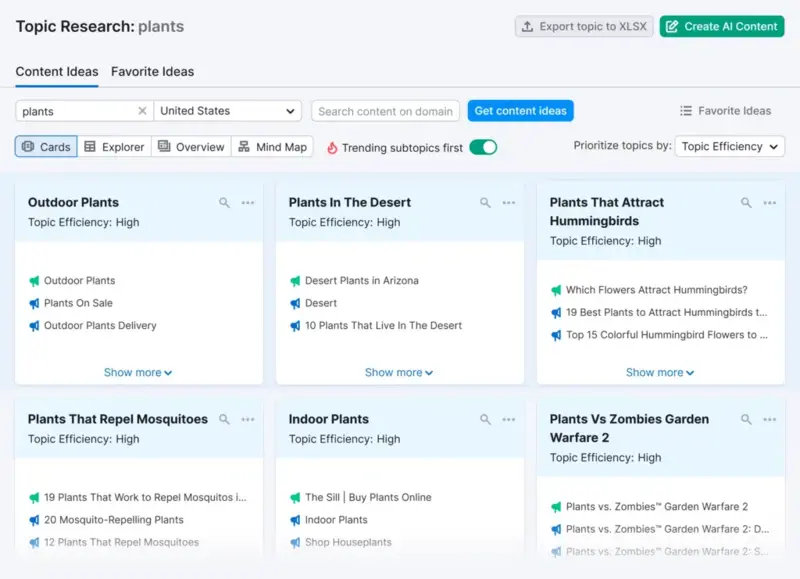
(Image Source: Semrush)
In addition to SEO and PPC features, Semrush and Ahrefs have reports and tools to help with content marketing.
With Semrush's Content Marketing Platform, you can identify top-performing keywords in your niche, automatically create content briefs, and optimize content for rankings using SEO Writing Assistant. Based on my experience, this feature is helpful during the entire content creation process. However, it's only available for Guru and Business plan users.
Ahrefs Content Explorer is less powerful but still can be used to find top-performing content in your field and high-quality link opportunities. Ahrefs has also recently started offering free AI writing tools, including a blog title generator, content ideas generator, and SEO-friendly blog post ideas generator.
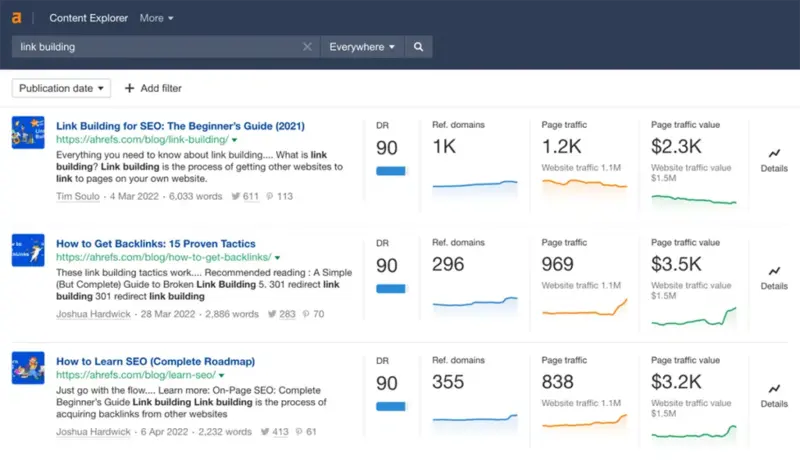
(Image Source: Ahrefs)
Both Ahrefs and Semrush offer various tools for content marketing. However, I'd vote for Semrush here, which can help your marketing team meet Google's quality guidelines at every step of the content creation process.
Social media marketing features
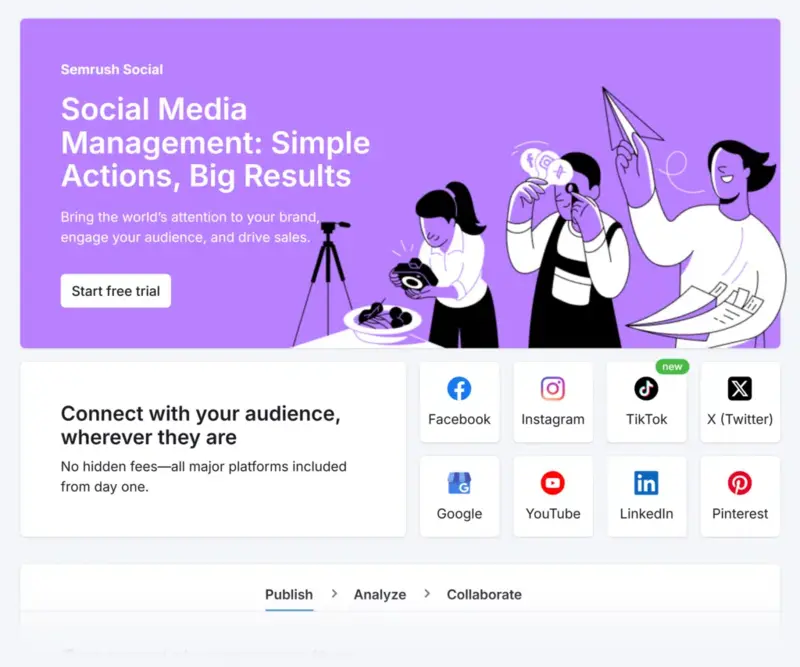
(Image Source: Semrush)
With Semrush's Social Media Platform, you can identify the best social media channels to reach your target audience and analyze competitors' top-performing content.
You can keep track of your audience growth, post reach, and engagement using Semrush Social Analytics. At the same time, Social Poster lets you schedule social posts in advance and share them online automatically.
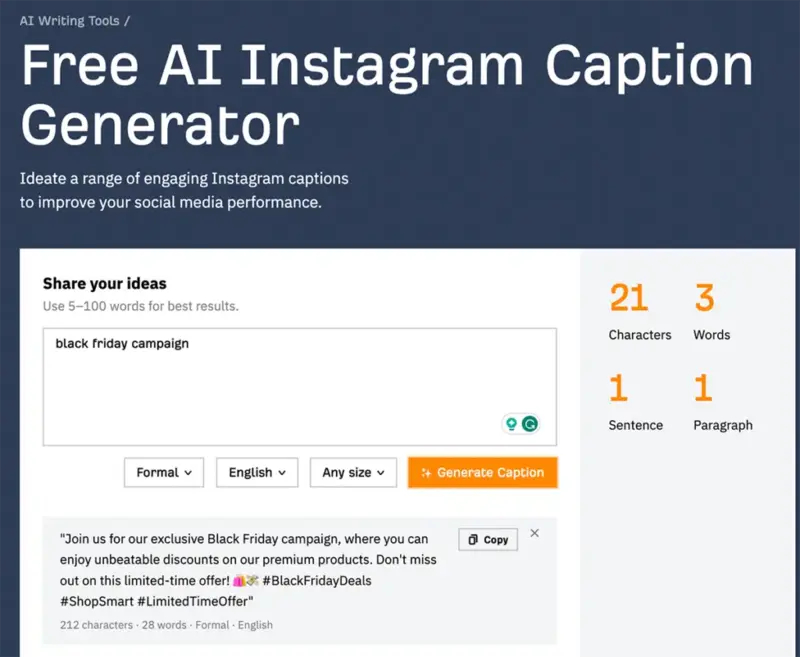
(Image Source: Ahrefs)
Unlike Semrush, Ahrefs does not have any social media features. However, its free AI writing tools can help you generate Instagram captions, hashtags, profile bios, and hooks. It actually creates pretty good captions, helping you automate tasks that used to be done manually.
Ahrefs and Semrush data sources
Have you ever wondered where Ahrefs and Semrush get their data? Surprisingly, they don't get it directly from Google or other search engines. Nevertheless, their metrics are usually quite accurate.
Where does Ahrefs get its data?
Ahrefs has a search crawler called AhrefsBot that works 24/7. Ahrefs claims they use their own database and don't get information from third parties, such as Google, Alexa, or other sources.
Ahrefs updates its backlink index every 15 minutes. However, it needs up to two months to update the information about all backlinks in its database. That's why new backlinks don't immediately show up in the backlinks report.
Updating keyword metrics might take from a few days up to two months.
Where does Semrush get its data?
Semrush gets its data from a combination of its machine-learning algorithms and trusted data providers. For search engine rankings and keyword metrics, Semrush relies on third-party data providers to gather Google search result pages for 500 million popular keywords. Semrush analyzes organic and paid search results for the top 100 positions to estimate your website's rankings.
Despite using powerful resources for crawling and data analysis, Ahrefs' and Semrush's numbers are estimates. Therefore, your actual website data and competitors' data might be different.
Customer reviews
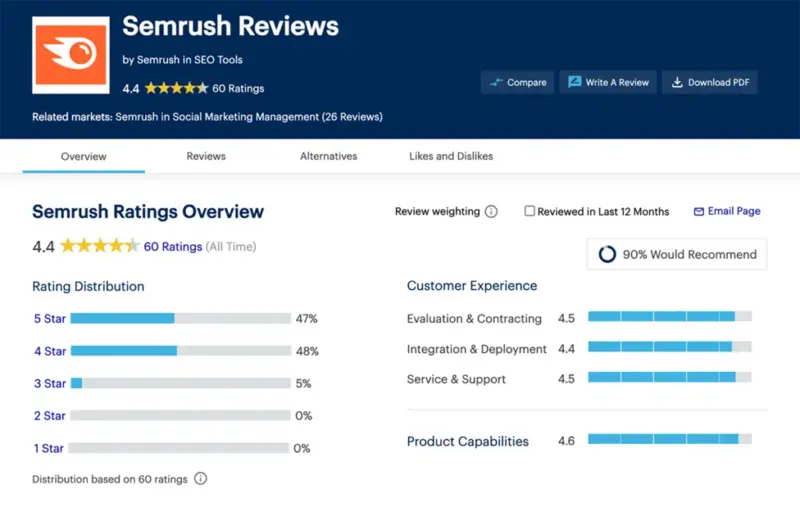
(Image Source: Semrush)
I was curious to learn what users think about Ahrefs vs. Semrush, so I checked their ratings and reviews on Gartner Peer Insights.
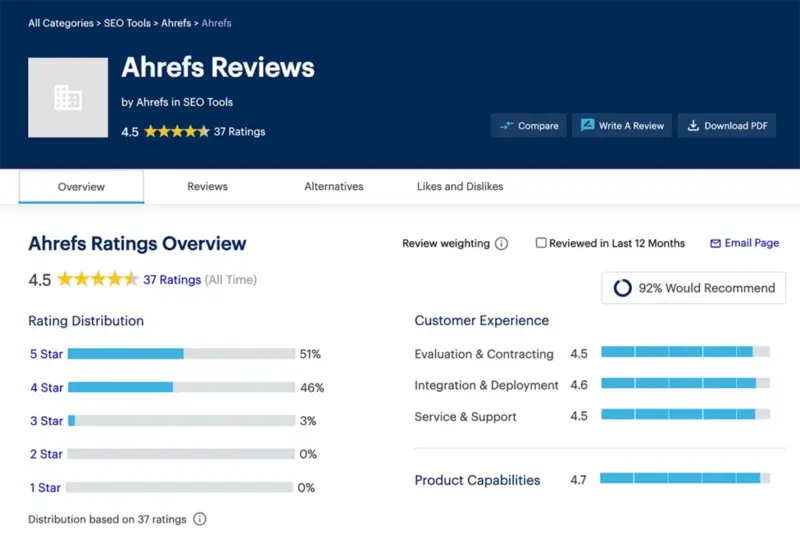
(Image Source: Ahrefs)
Some Semrush users commented that its Keyword Research and Backlink Gap features are "highly beneficial in discovering untapped keyword and backlink opportunities." Others mentioned its powerful all-in-one marketing solution for agencies.
As for Ahrefs, many users highlighted its comprehensive SEO toolkit for backlink research and analysis.
Some mentioned Ahrefs' ability to provide data estimates and measure website performance outside of Google. Among the things users disliked about Ahrefs, they mentioned its expensive pricing plans, limited monthly credits, and only allowing one user per account.
Pricing
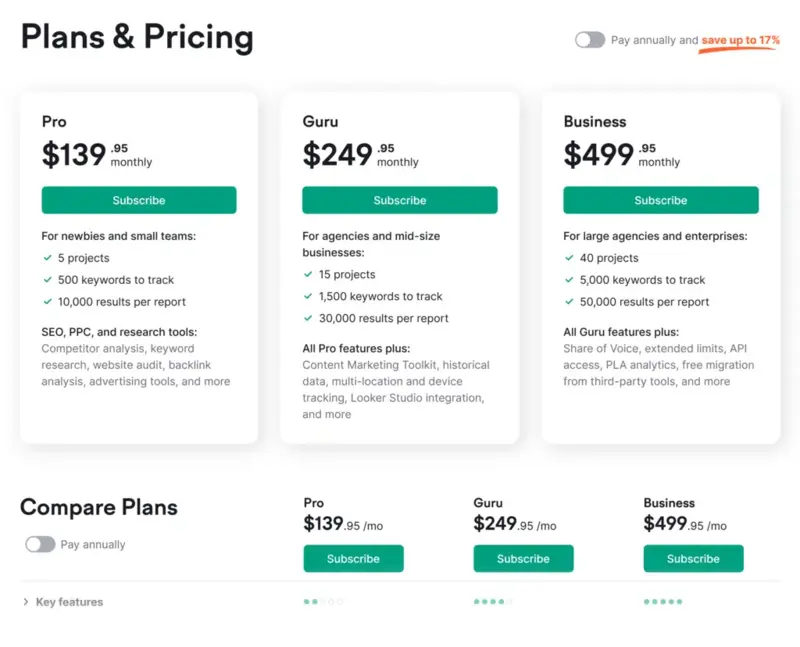
(Image Source: Semrush)
Ahrefs and Semrush are expensive compared to other SEO tools. Therefore, consider what you'll want to use them for before choosing any paid plan.
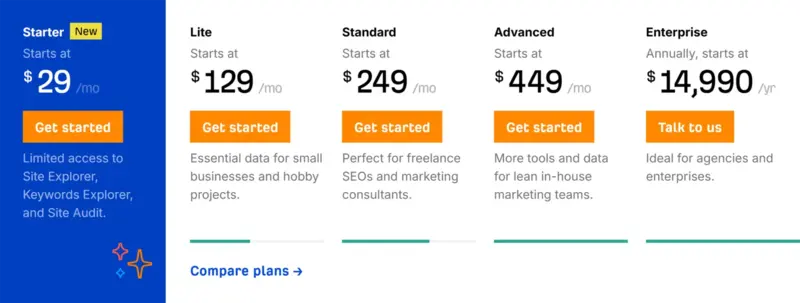
(Image Source: Ahrefs)
If you work at an agency that helps website owners analyze their backlink profiles and build new backlinks, the Ahrefs Standard Plan can be your go-to solution. Alternatively, if you are looking for an all-in-one tool for an entire marketing department, the Semrush Guru or Business Plan will work better for you.
If you are a small business on a budget, Semrush provides access to all its essential features on the entry-level plan — Semrush Pro. You'll be limited to five projects, 500 tracked keywords, and 3,000 reports per day, which is enough to start with. Besides, you can start with a 7-day free trial to decide whether Semrush suits your business needs.
Even though Ahrefs' entry-level plan is cheaper than Semrush's, it's considerably less generous. It doesn't include many essential features, such as the content explorer, broken link building, content gap, and SEO competitor analysis tools, to name a few.
Ahrefs pricing plans offer one user seat with up to 750 monthly credits. Rank Tracker and Site Audit are excluded from the monthly limits. However, if you exceed the pricing plan's limits, you can be automatically charged for extra credit consumption.
Which tool has the best support?
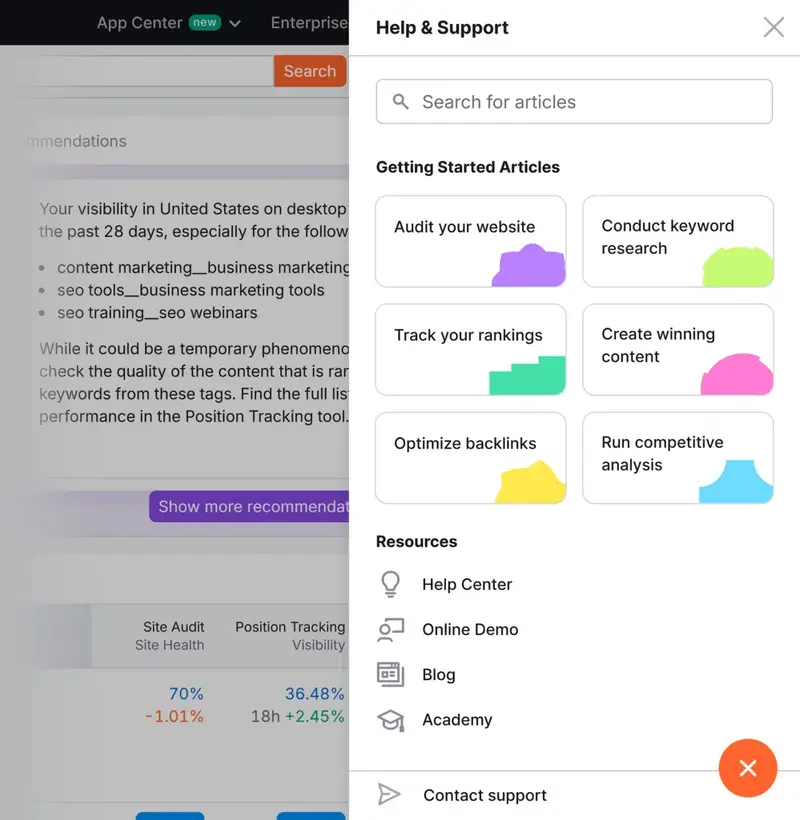
(Image Source: Semrush)
You can reach Semrush customer support via email, live chat, and phone.
If you don't have an account, you can still get your questions answered via a chatbot on the Semrush pricing page. For existing users, Semrush offers live chat and a contact form.
True to their word, Semrush replies within one business day. I once accidentally paid for Semrush Pro instead of starting a 7-day free trial and immediately reached out through the contact form and requested a refund. The Semrush team responded in several hours and initiated a refund that arrived a few days later.
Ahrefs also has a live chat on their website. However, you must be logged in to chat with the Ahrefs team. If you prefer emails, you can also contact the Ahrefs team by clicking "Contact us" in the footer.
Overall, both tools offer various ways to reach customer support and provide timely responses.
Which is better: Ahrefs vs. Semrush?
I believe every tool has its advantages and can help you achieve your business goals.
However, if I had to choose one, I'd go with Semrush.
My verdict is based on the variety of features and data accuracy. However, it doesn't mean that Ahrefs is worse. Depending on your needs, it can also be very beneficial to your project.
